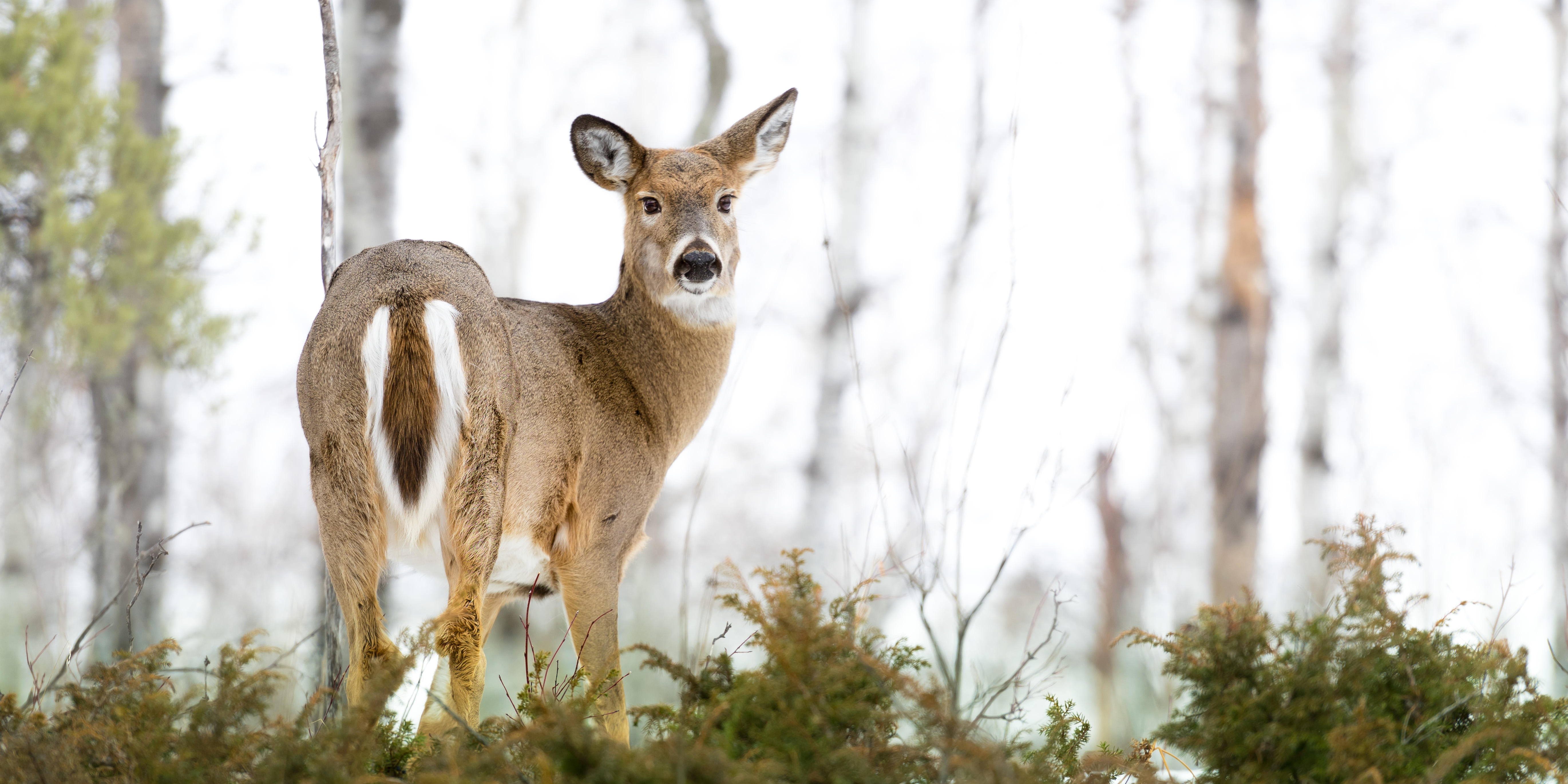When the COVID-19 pandemic hit in March 2020, much was unknown regarding its impact on non-human species beyond the link to China's wild animal food market. Caused by severe acute respiratory syndrome coronavirus 2 (SARS-CoV-2), it became a new zoonotic virus of global concern. Genome sequencing determined that coronaviruses circulating in bats in China shared similarities with SARS-CoV-2, and studies on wildlife species began to take shape worldwide.
Experimental studies showed white-tailed deer (WTD) are highly susceptible to SARS-CoV-2 and can transmit the virus to deer-to-deer. These results raised significant concerns about the role of WTD in the ecology of the virus and virus control efforts. With evidence demonstrating widespread infection of SARS-CoV-2 in deer populations in several states, we conducted an in-depth investigation to determine the prevalence, genetic diversity, and evolution of the virus in white-tailed deer in New York State (NYS).
Thanks to a collaboration with the NYS Department of Environmental Conservation (DEC) and using the state's established chronic wasting disease surveillance system as a backbone, we obtained access to lymph node samples from free-ranging hunter-harvested deer from the 2020 and 2021 hunting seasons for study.
We tested 5,462 samples for SARS-CoV-2 using real-time RT-PCR. SARS-CoV-2 RNA was detected in 0.6% of 2,700 samples from the 2020 season and 21.1% of 2,762 samples from the 2021 season. Spatial analysis of the results revealed multiple hotspots of infection in several localized areas in NYS.
As the pandemic continued, the SARS-CoV-2 virus evolved, resulting in variants of concern, such as Alpha, Delta, and Omicron. Analysis of the genetic sequences of SARS-CoV-2 RNA detected in our deer samples showed the co-circulation of three major variants of concern (Alpha, Gamma, and Delta) in deer populations in NYS, long after they had circulated in humans. The presence of multiple mutations in the variants found in the deer samples provided evidence of the circulation and evolution of virus variants within NYS deer populations.
Thus, the white-tailed deer, the most abundant large mammal in North America, could serve as a potential reservoir for variant SARS-CoV-2 strains, in addition to acting as an efficient species for spreading infection. This study is a critical start to understanding the risks of virus spillover and spillback between humans and free-ranging white-tailed deer. The next steps are the implementation of surveillance programs to monitor SARS-CoV-2 dynamics in deer populations.
Leonardo C. Caserta, Mathias Martins, Salman L. Butt, Nicholas A. Hollingshead, Lina M. Covaleda, Sohel Ahmed, Mia Everts, Krysten L. Schuler, Diego G. Diel. "White-tailed deer (Odocoileus virginianus) may serve as a wildlife reservoir for nearly extinct SARS-CoV-2 variants of concern." PNAS 2023 Vol. 120 No. 6. https://doi.org/10.1073/pnas.2215067120 DOI: 10.1073/pnas.2215067120




